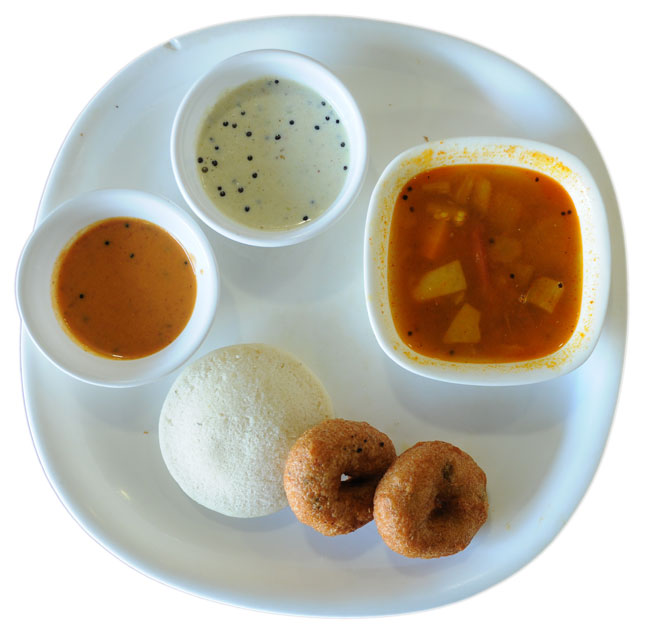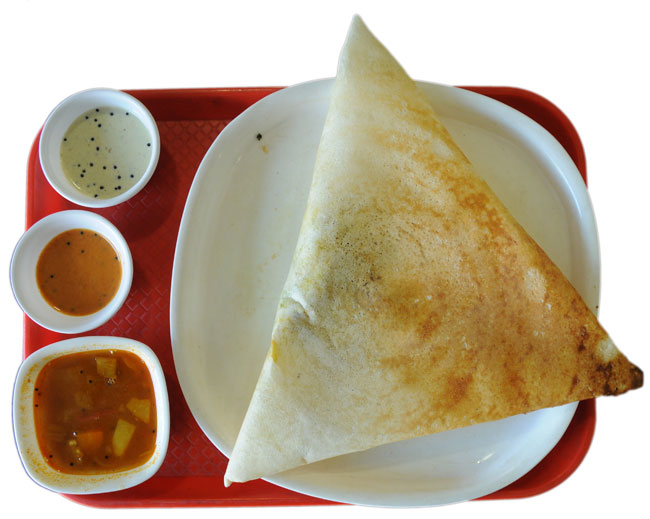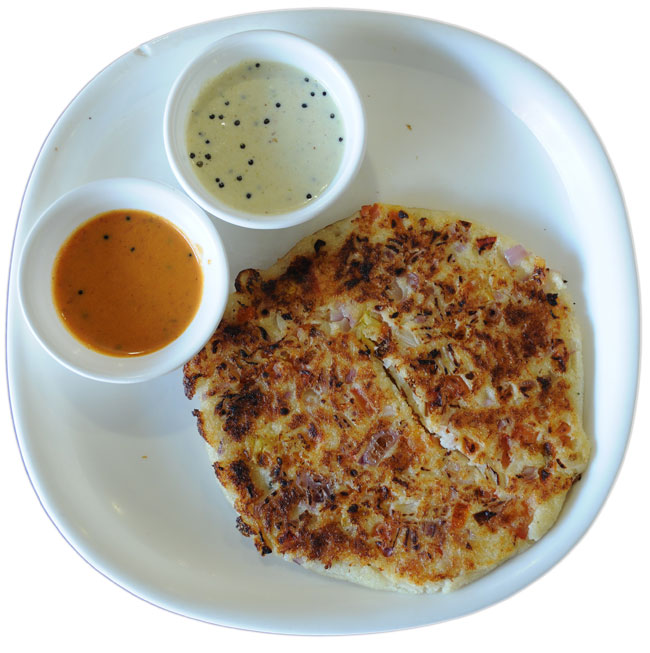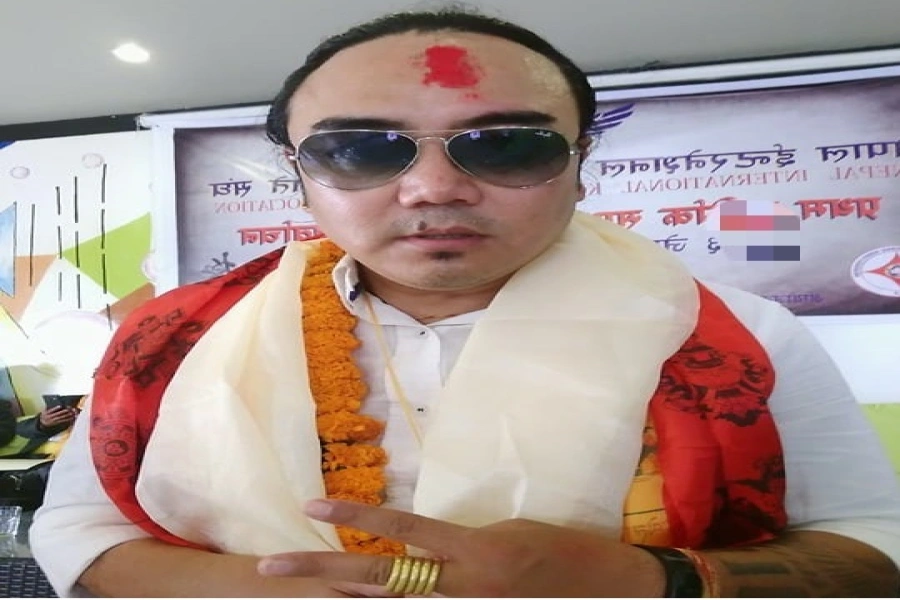Chef Bhola Yadav of Gulab says that there are more than a hundred items in South Indian cuisine. Some of the most common and the easiest to make items are dosa, idli with vada, and uttapam. “Although for restaurants we grind the flour in commercial stone mixers, regular mixers too can do the job. The only difference is that the end result may not be as fluffy as the ones in restaurants,” he says adding that there are many idli or dosa mixes that you can buy in the market to make it easier for you to make the cuisine in your own kitchen.
Idli
Idli is one of the most traditional breakfast items in a South Indian household. The batter is fermented which makes it easy for the body to breakdown the food. There are many variations to it, with people in different regions making it differently. The recipe calls for idli rice which isn’t widely available so the chef suggests using a store bought box mix for it and following the instructions on the box to get the perfect idli for your breakfast.

Made from fermented batter, dosa is the Indian take on crepe and recently, there are many variations too it with cheese and chicken too added to the mix.
Ingredients
For the batter
-2 cups short-grain rice
-1/2 cup black lentils
-1 teaspoon fenugreek seeds
-1/2 teaspoon salt
-Vegetable oil, for frying
Frogs worshiped and fed delicacies to mark Janai Purnima

For the filling
-3 tablespoons ghee (or vegetable oil)
-1 teaspoon mustard seeds
-1/2 teaspoon cumin seeds
-2 dried red peppers
-1 medium onion, diced
-1/2 teaspoon salt
-1/2 teaspoon turmeric
-Pinch of asafoetida (hing)
-1 tablespoon grated ginger
-6 to 8 curry leaves
-4 garlic cloves, minced
-2 small green chilies, finely chopped
-1/2 kg potatoes, boiled, peeled and cubed
1/2 cup roughly chopped coriander, leaves and tender stems
Method
To make the batter
Soak the rice in four cups of cold water after rinsing it. Put the dal and fenugreek seeds in a separate small bowl. Rinse it well and cover it with cold water and leave them to soak for four to six hours.
Afterwards, drain both on different colanders. Process the rice in a food processor and add a cup of cold water to help it grind into a smooth paste. Take your time with it and do it in small batches to ensure they all grind easily. When you are done with the rice, repeat the process with the dal and fenugreek mixture.
Combine both the pastes in a medium mixing bowl and whisk them together, adding enough water to make a medium thick batter. This should yield you about six cups. Cover the batter with a kitchen towel and let it ferment for about eight hours, the surface of the batter should be bubbly. You can either use the batter immediately or refrigerate it, in which case it will stay for up to a week. If the stored batter has thickened, thin it out with water before cooking.
Dosa
To make the potato filling
Put ghee or oil in a wide skillet over medium heat. When oil is hot, add mustard seeds and cumin seeds. Wait for seeds to pop, and add the red peppers and onion. Stir until onions have softened and season with salt. Add the turmeric, asafoetida, ginger, curry leaves, garlic and green chili. Stir to evenly coat everything and let it cook for a minute.
Add the potatoes and half a cup of water. Stir well and let the potatoes cook till all the liquid has evaporated. Mash the potatoes a little with the back of a wooden spatula. Add coriander and set it aside at room temperature. The potato filling can be made a day in advance.

Making the dosa
Set a skillet over medium heat and add a teaspoon of oil. Use a ladle ‘dadu’ to put 1/4 cup of the batter in the center of skillet. Using bottom of ladle, spread the batter outward in a circular motion, quickly to create a large circle with thin batter. Drizzle 1/2 teaspoon oil over the top and leave the batter to become brown gradually, until the outer edges begin to dry. This usually takes about 2 minutes, and you only have to cook on one side.
With a sharp spatula, carefully loosen the dosa from the skillet. Make sure that the bottom is crisp and brown. Spoon 1/2 cup potato filling on top of the dosa, and center it as a strip right in the middle of the circle. Flatten the potato mixture slightly and using the spatula, fold the sides of the dosa around the filling to make a cylindrical shape. Once cooked, the dosa should be served immediately.
Uttapam
Uttapam directly translates to ‘poured appam’ in Tamil and is the Indian take of a pancake. A savory delicacy, it is famous in many Indian households. Although a South Indian delicacy, it is enjoyed by people across the country.

Ingredients
-1 cup suji
-1/4 cup slightly sour curd
Finely chopped vegetables of your choice (the most commonly used are capsicum, onion, tomatoes and green chili)
-1 teaspoon grated ginger
-Chopped coriander leaves
-Oil
-Salt
Method
Mix the suji and curd in a bowl and add salt to taste. Gradually add water as you stir until the batter becomes thick yet has a watery consistency. Let it rest for about 20 minutes after which you add all the chopped vegetables of your choosing into the batter along with a teaspoon of oil. Check the consistency again and add water if necessary since suji soaks up water when you let the batter sit. In a non stick pan, pour in a little oil and spread the oil around with an onion to give it extra flavor. It also helps remove any residue sticking on to the pan as you make more in the batch. When the oil is hot, ladle the mixture in the middle and spread it around with the bottom of the ladle. It should be slightly thick, approximately 1/4 of an inch. As it cooks, drizzle a teaspoon of oil around the edge of the cooking batter. Cook until the bottom become slightly brown and the top isn’t white anymore. Flip the uttapam and cook it on the other side until it too becomes light brown. Flip it over for 30 seconds more and then serve it hot with ketchup or tomato chutney.





































